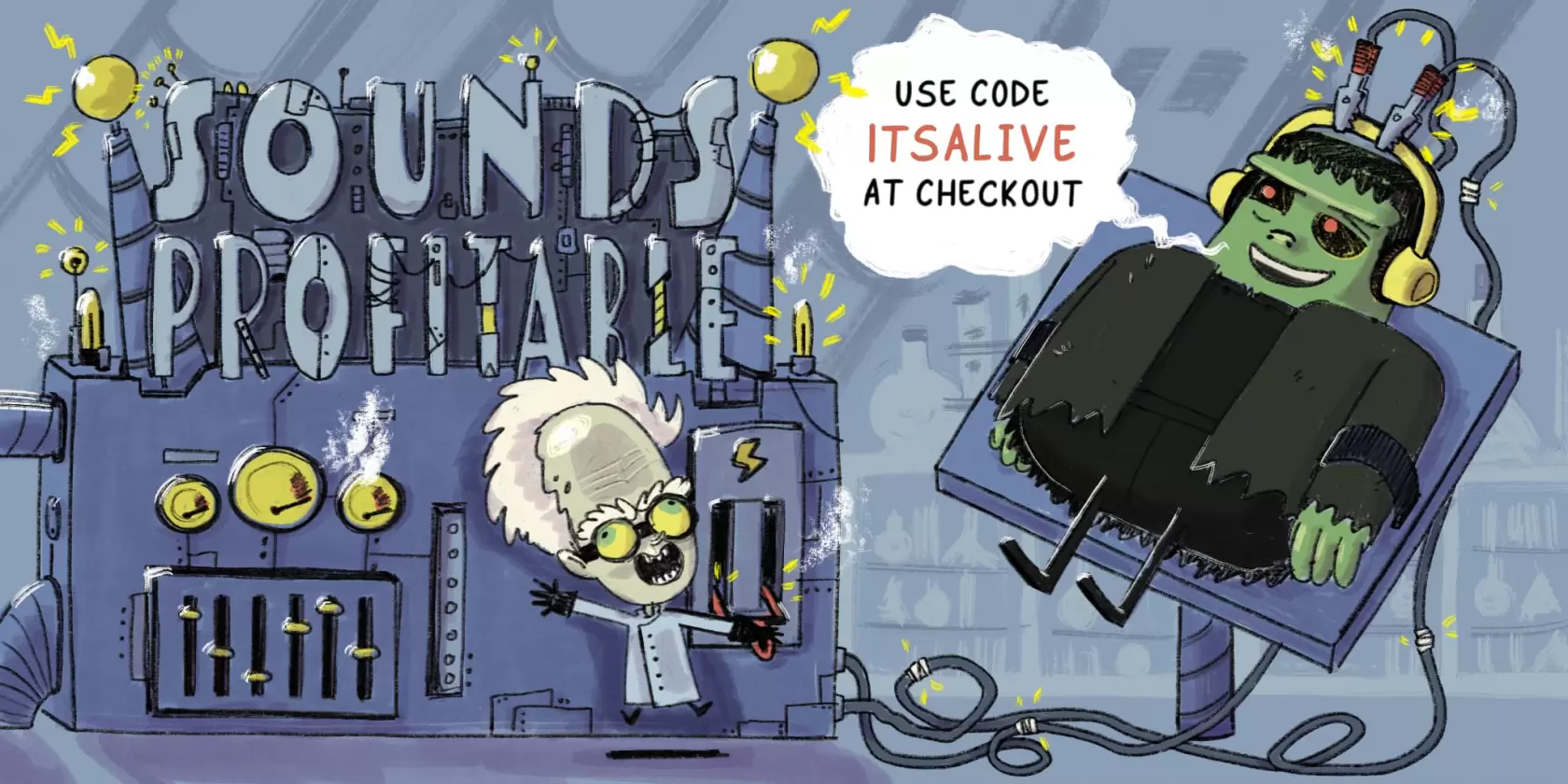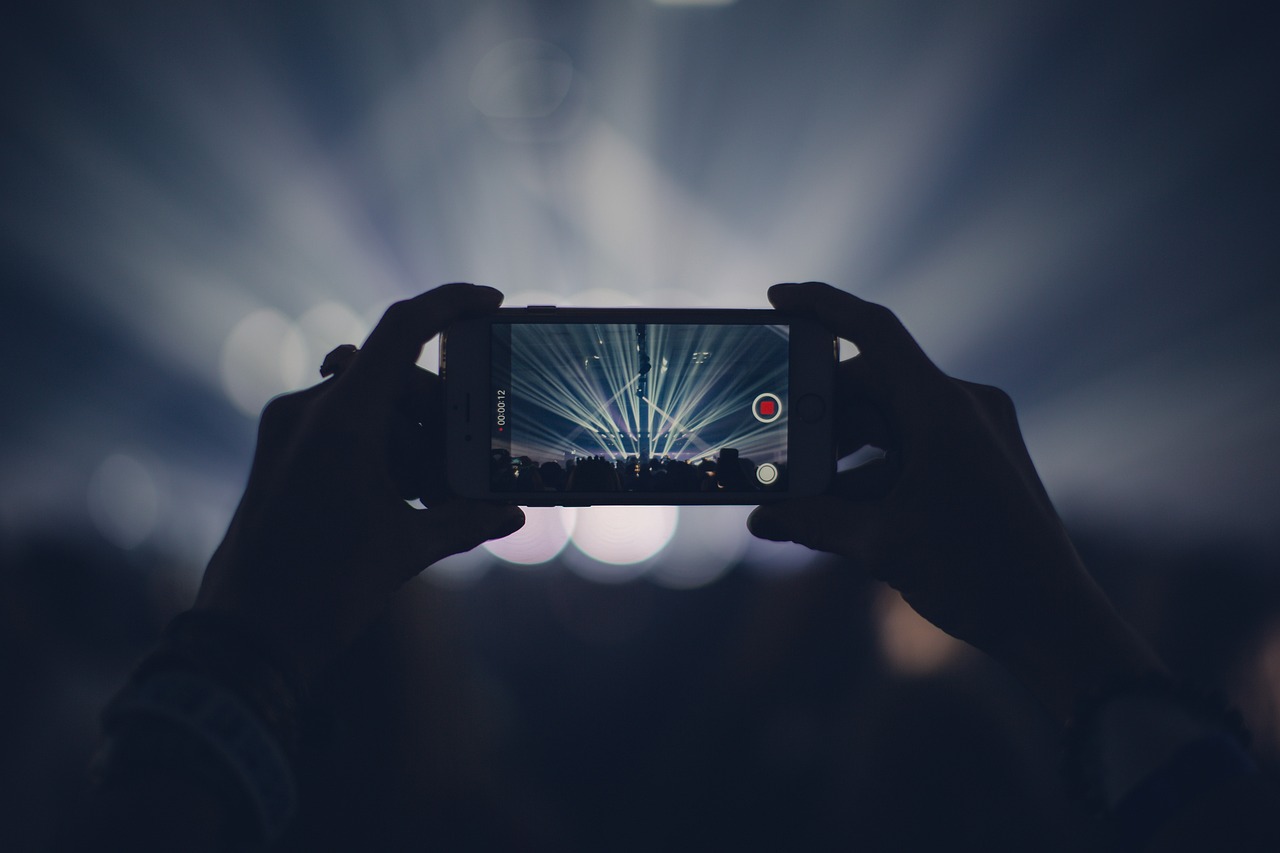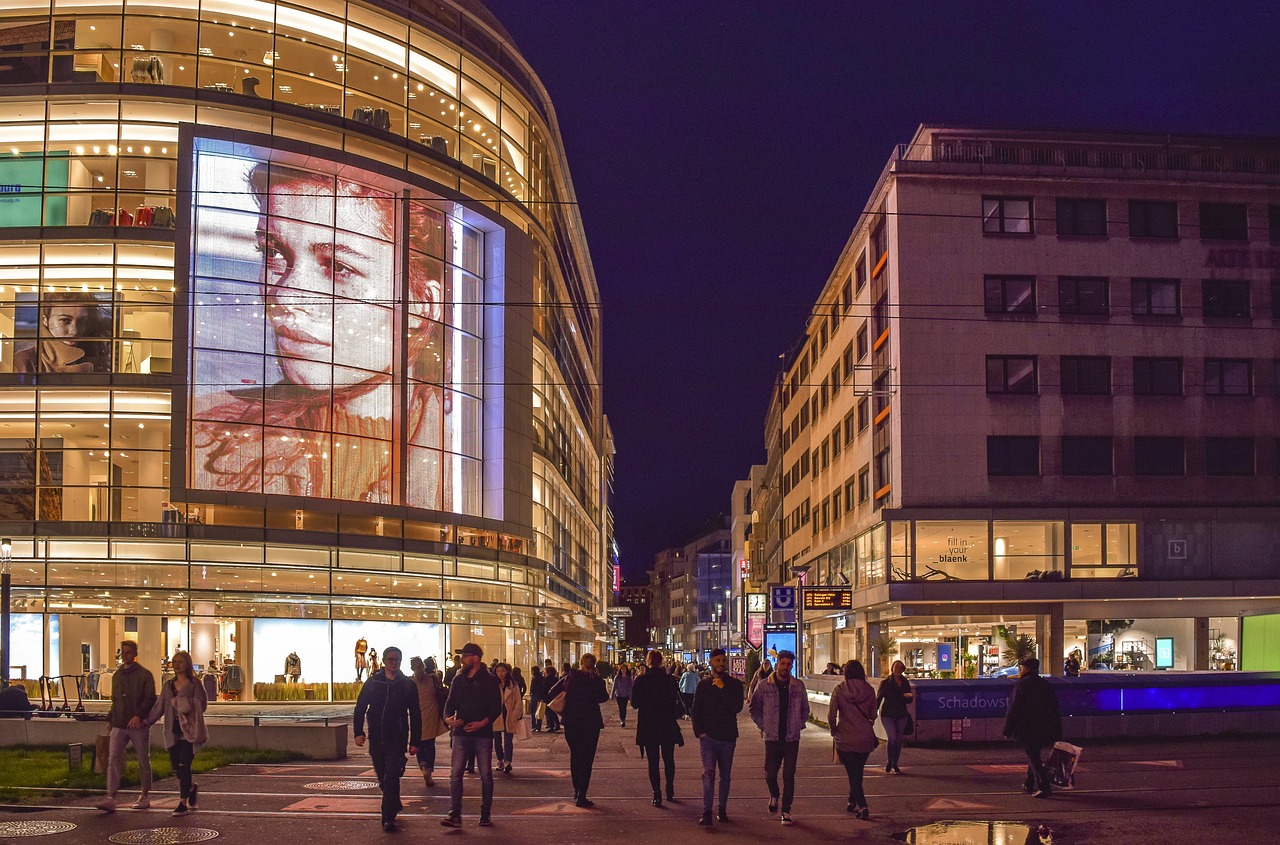This week on Sounds Profitable: Adtech Applied, Steve Wilson, chief strategy officer at QCODE Media discuss what it takes to get podcasts featured in major podcast listening apps, how to build relationships with podcast discovery platforms, and becoming a co-marketing partner. Listen in!
Welcome back to #GoodData͏, where we read up on the latest podcast data so you don’t have to. This month, we’re going back to basics. Why are podcasts the “it” girl right now, for listeners and advertisers? Let’s find out what the latest numbers have to say.
My sister lives under a rock. She texted me two weeks ago asking if I had ever heard of this “new” show called Friends. We’re only a few years apart and we grew up in the same house, but she might as well be Amish. But talking to a digital media alien has its perks: It forces me to abandon exclusionary jargon and discuss my work using the most accessible language possible.
A real stumbling block for the podcast industry has long been that nothing makes any goddamn sense. Even folks working in neighboring media channels struggle to comprehend the value of podcasts, for both the growing number of monthly listeners and for the advertisers with ramped up audio budgets. In short, there’s a real Larry David open question of “what’s the deal with podcasts”?
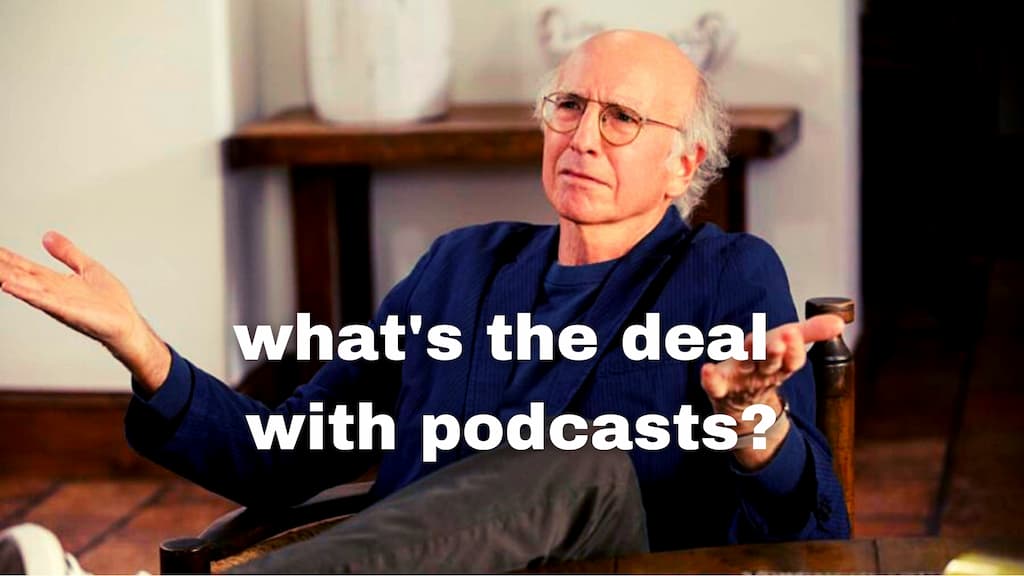
What’s the big draw? Why do people listen to podcasts?
To understand why people listen to podcasts, you have to start thinking of audio products—like podcasts—as Lifestyle Brands. If you’re unfamiliar with this marketing term, some examples of lifestyle brands that my sister LOVES are Peloton and Lululemon. Whereas my “lifestyle brands” are McDonald’s and Crocs. (Again, same house… same parents.)
Here’s Kansas-based Limelight Marketing more eloquently describing this category of brands:
Lifestyle brands, regardless of industry or product, embody the values, beliefs, aspirations, and attitudes of their particular target audience.They are brands that tap into and influence our emotions, aspirations and ideologies. They create a connection that embeds their brand into their consumers’ personal identity and creates a sense of belonging to a community or a mindset they admire.
Through the lens of “my podcast queue reflects my lifestyle” it’s much easier to understand what makes this growing audience tick.
Not only do podcasts provide listeners with a sense of belonging, they also serve as accessories to an individual’s self image. In the same way that carrying a Birkin bag sends a message about who you are and what you value, wearing this “Hello From The Magic Tavern” logo hoodie tells everyone: I’ve listened to grown men pretend to be squirrels for hours. Different folks. Different strokes.
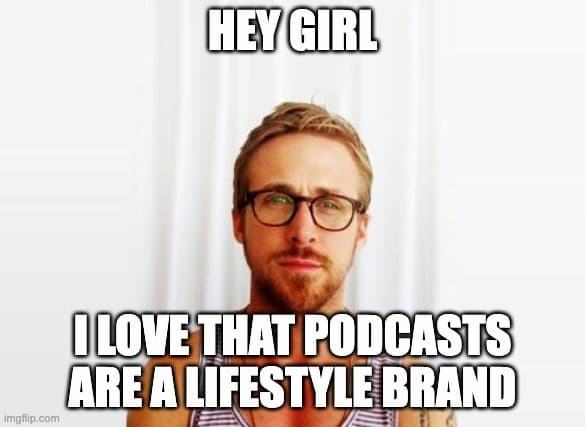
Last week iHeartMedia in partnership with Publicis Media (PMX) shared the results of its “Exploring The Brand Benefits of Trust & Companionship in Audio” study. The findings highlight what moves people to listen to podcasts.
- 67% of podcast listeners say that podcasts “motivate and inspire me”
- 74% of heavy podcast listeners (defined as in the top 25% of hours listened per week) say that podcasts “motivate and inspire me”
- 71% of podcast listeners say that podcasts “educate/teach me something new”
- 79% of heavy podcast listeners say that podcasts “educate/teach me something new”
- Podcast listeners are 158% more likely than listeners of other audio platforms to say they listen “to immerse myself”
- Participants reported feeling “lonely,” “disconnected,” and “more overwhelmed doing simple tasks” when they were asked to stop listening to radio and/or podcasts for three days
What else motivates podcast listeners to tune in?
Earlier this month, Queensland University of Technology researchers from The School of Psychology and Counseling shared the results of a study that surveyed 300 participants about their podcast listening habits. The study pulled responses across regions and age groups to compare individual podcast consumption habits to the survey participants’ known personality traits. Here’s what they discovered:
- Podcast listeners are more open and non-neurotic than non-listeners
- People with personality traits that measured higher in openness to experience, interest-based curiosity, and need for cognition were more likely to listen to podcasts
- Researchers also disproved their original hypothesis that podcast listeners were likely drawn to the medium for “mindfulness reasons or due to smartphone addiction.” Neither proved to be key motivators for habitual podcast listeners.
- Interestingly, the study found that people motivated to belong (or “fit in”) were less likely to be habitual podcast listeners
Published in the online academic research journal, PLOS ONE, research findings concluded that, based on personality traits, podcast listeners are motivated by informational needs rather than social or emotional needs.
But I fundamentally disagree with this outcome.
Context is everything. Modern media diets are all about curation and predictive algorithms. In a departure from past generations, I’d argue that “fitting in” means something different to a nineteen year old than it does to a forty-nine year old. Younger generations would rather “find their tribe” as Amy Poehler puts it in her memoir “Yes Please” than “fit in” with blanket social constructs.
Here’s my interpretation of these findings: Non-listeners might struggle with not knowing where to begin with podcasts, since this on-demand media channel is a departure from their goal of consuming content to “fit in.” I’d argue that habitual podcast listeners are more purposeful about how content serves to fulfill their social and emotional needs. Maybe podcast audiences have a deeper grasp on their content preferences because they know themselves better?
In a 2019 research study from The Reuters Institute of Journalism at the University of Oxford, which polled a nationally representative average of about 2,000 respondents from each country, we can see similar podcast listener motivations quantified. Across countries, here’s what drives podcast listenership:
- 46% tune in to keep updated about topics of personal interest
- 39% tune in to learn something new
- 25% tune in to fill empty time
- 22% tune in as a change of pace from music
Specifically analyzing the UK sample size, the study also examines how listener motivations vary by age group. The graph below illustrates generational divides in listener motivations.
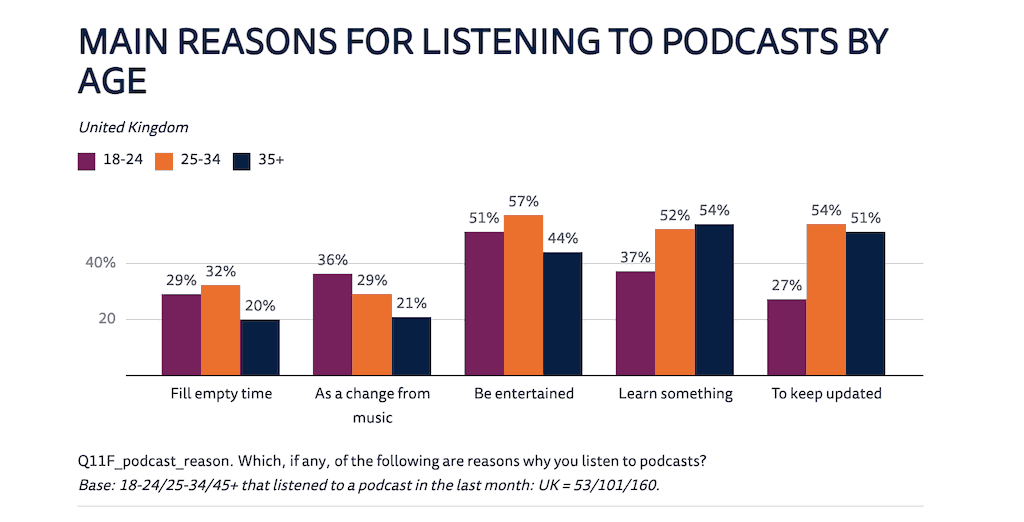
The Takeaway
What drives listeners to podcasts goes deeper than a basic human desire to efficiently consume information and be entertained. This is an emotionally charged media channel. When listeners turn on their favorite podcast they’re seeking out connection, community, inspiration, and something to quench deep seeded curiosity. Not only does a listener’s podcast queue reflect their personal preferences but like a strategically placed coffee table book, it signals to friends and family who they are and what they value.
Devil’s Advocate
Now, you could say this is true of all media but I disagree. The social imperative to catch up on Severance or read the New Yorker on a subway platform or listen to Taylor’s version as soon as the album drops…well, are those wholly personal preferences? Or peer pressure? In this way, podcast consumers actually become more valuable. Our motivations to tune in and engage go deeper than fleeting trends. The podcast audience is (quite literally) here for a long time and a good time.
Where do people listen to podcasts?
In 2022, the average person’s media diet is a colorful and chaotic plate of food. And unlike other parts of our media consumption regimen, audio has long been described as a “lean back” rather than a “lean in” medium. That means podcast listening is more elastic and can happen just about anywhere, which lends itself to the whole “lifestyle brand” narrative. This is good news for creators and advertisers, because that means listeners can fit podcasts into every nook and cranny of their lives!
Tracked since 1998, Edison Research’s The Infinite Dial is America’s longest running survey of digital media consumer behavior. The highly anticipated 2022 report dropped last month. As you can see below, this section compared shifts in at-home listening preferences to in-car podcast consumption, quarter-over-quarter, across the last year (2021).
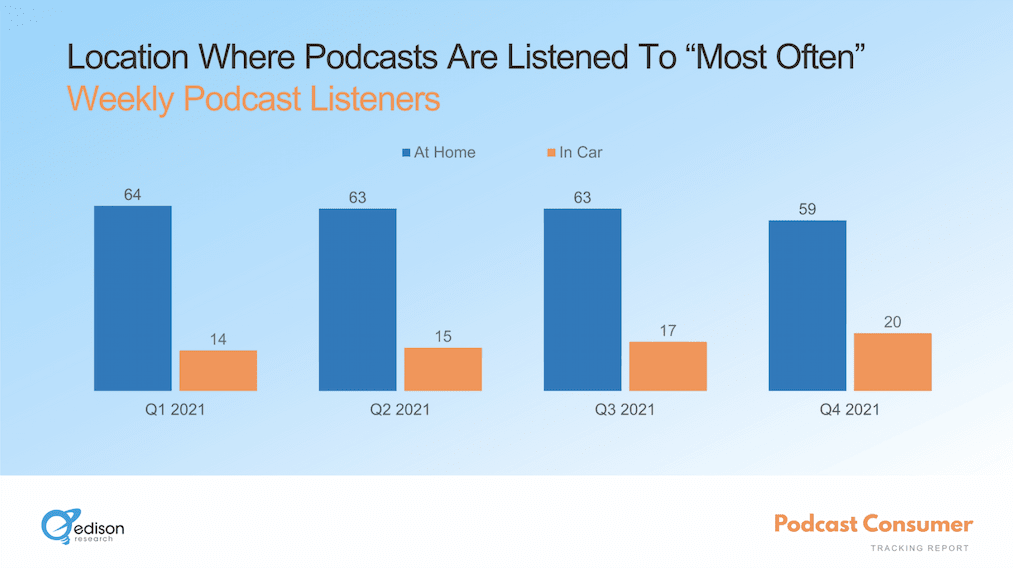
At the pandemic’s height in 2020, there was a real fear that without a daily commute, podcast engagement and downloads would suffer irreparably. (Here’s a little time capsule on the subject from the March 31, 2020 edition of Hot Pod.) Now, a few years into our collective hell, audiences have found a place for podcasts in their routine. You can see above that at-home listening decreases as in-car listening increases, indicating that more social activity incrementally affected listener behavior.
Referencing the 2019 Reuters/Oxford study again, the flexibility to consume podcasts anywhere gives it staying power. Check out this pre-pandemic data below, to get a sense of where listenership may “bounce back” to in the near future:
- 64% at-home podcast listening
- 24% commuting on public transport
- 20% riding on private transport (car or bike)
- 18% while “out and about” shopping or walking
- 16% while exercising
Particularly interesting, the study also shows how listening location varies by age group.
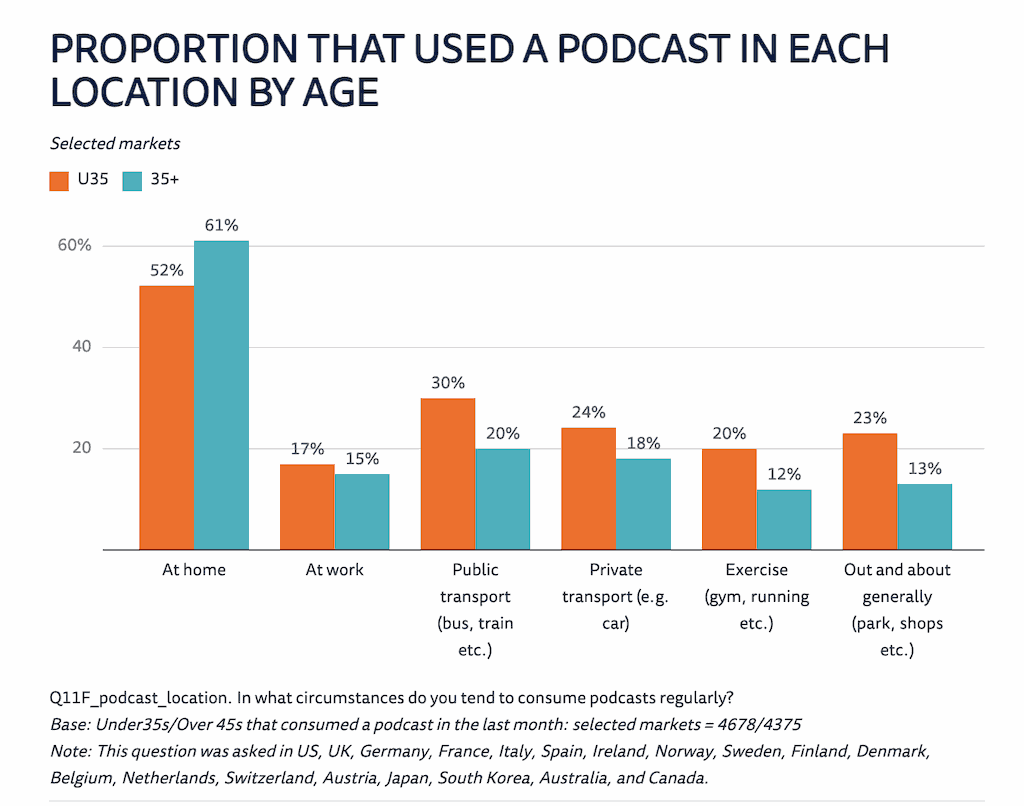
As marketers think more about podcasts as a lifestyle product, honing in on where audiences listen to their shows may unlock an opportunity to reach more people. Whether commuting, folding laundry, or taking a “depression walk” around the block—like Flubber, a good podcast seamlessly molds to the contours of our lives.
There are TOO many podcasts. What’s the deal with that?
There are an estimated ~2 million podcasts in existence. That might seem like a lot but compared to other kinds of media, it’s actually pretty low. Check it out:
- 37 million YouTube channels (source: March 2022)
- 2.2 million minutes of content on Netflix (source: 2020)
- 82 million tracks on Spotify (source: 2022)
- 1 billion Facebook stories are shared daily
- 100 million Instgrammers watch or launch live videos daily
- 200 billion Tweets are published per year
- 100 billion average monthly video views on TikTok (source: 2022)
Everyday, there’s a deluge of content to consume through digital platforms. For audio products like podcasts, the competition isn’t necessarily other podcasts but all these other forms of media competing for our attention. Whether you’re on Apple Podcasts or AppleTV+, the paradox of choice will be a hurdle. My advice to creators and consumers: There’s no such thing as too much. Audiences will always gravitate to their special interests.
What’s the deal with podcast advertising?
According to a report released just last week from the Interactive Advertising Bureau (IAB), podcasts and streaming audio have seen the largest growth in ad revenue—hitting a total of $4.9 billion during 2021. With a measured 58% year-over-year growth, the digital audio category is said to have outpaced streaming video, social media, search, and display advertising. Not too shabby.
This ad revenue growth is great news for publishers, platforms, and independent creators hoping to monetize their podcasts through advertising support. But before the money comes through the door, salespeople need proof that podcast ads work.
How exactly do podcast ads breakthrough? Is there a science behind what makes this ad channel so effective? In short, yes. Audio advertising is likely more effective than other ad channels because of how our brains are stimulated by audio storytelling. There’s a great episode of Freakonomics from 2016 that talks through how our brains respond more emotionally to audio storytelling, which leads to stronger memory retention. The episode details how researchers at UC Berkeley (go bears!) used episodes of The Moth Radio Hour to measure our brains on podcasts.
In the meantime, here are some quick and dirty facts on why our brains remember podcast ads. Spotify recently partnered with research team Neuro-Insight, a leader in the field of cognitive research, to understand how our brains respond to digital audio. Neuro-Insight used a series of proprietary metrics to understand how our brains reat to information delivered via digital audio. Check out the study’s key findings:
- 66% of participants said “there was too much visual stimulation” and “audio provides a nice escape”
- 93% of the brain’s engagement with the content transferred directly into ad engagement, as the listener moved from a music or podcast into the ad experience
- 19% higher Brand Impact on Spotify compared to all other media
- Digital audio led to “significantly elevated” memorability, engagement, and emotional intensity
- Digital audio allows listeners to “self select” content that connects to their special interests and lifestyle. Compared to radio, this interactivity leads to increased brain engagement
- People use digital audio to enhance their daily experiences
This isn’t the only example of media properties turning to neuroscience to prove out marketing techniques. Last year Australian Radio Network’s Neuro Lab set out to understand how consumers’ brains respond to distinct audio formats through the Sound You Can See study. The study, which measured brain responses to radio, music, and podcasting formats, yielded the following results:
Audio builds a strong connection between audiences and brands
- 200% uplift in attention when a listener hears an advertisement across two audio formats (example: radio and podcasts)
- 134% uplift in memory for audio content (editorial and advertising) delivered across two or more listening channels (example: radio and podcasts)
Audio enhances the effectiveness of other media campaigns
- Out-of-home and TV messages saw a 35% average increase in memory when paired with media running across audio channels
Wrapping It Up
For media aliens like my sister, still wondering if Ross and Rachel will ever tie the knot, the answer to the “why podcasts” question is actually a very accessible one. In almost every way imaginable, podcasts fit into our lives.
- Podcasts are the ultimate lifestyle product. Podcasts can work for literally anybody’s lifestyle. The “lean back” or elastic nature of audio listening seamlessly fits into our lives.
- There’s a podcast community for everyone. There’s no such thing as “too many podcasts.” Listeners are curious, open minded, and turn to pods to inform their special interests.
- There’s science behind why podcast ads work so well. Audio is more memorable and elicits a stronger emotional charge than other types of media. Our brains are wired to retain audio messages, which may explain why digital audio ads breakthrough.
New Sponsors
Sounds Profitable exists thanks to the continued support of our amazing sponsors. Each sponsor receives one hour of consulting per month as a way to say thanks.
- Barometer provides nutrition labels for podcast content. We analyze podcast episodes using AI and output measurements about brand suitability as defined by the GARM framework.
- BiggerPockets is a complete resource for succeeding in real estate investing.
Want to learn more about sponsorship? Hit reply!
Rel’s Recs
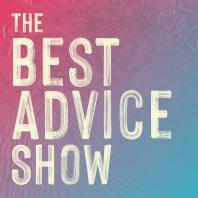
Arielle Nissenblatt of EarBuds Podcast Collective this week has chosen The Best Advice Show from Zak Rosen, hosted by Anchor.
This show is short, snappy, and actionable. Even if you’re not seeking advice, this show is like a warm hug. Zak Rosen invites contributors from all walks of life, all professions… anyone, to share something that has helped them in life. Even if the advice doesn’t apply to you, you’ll learn about each guest and what brings them to the recording session, which, in and of itself, is valuable and horizon broadening. Start with this episode, an interview with Rebecca Lavoie, who oversees the team at New Hampshire Public Radio.
Market Insights with Magellan AI
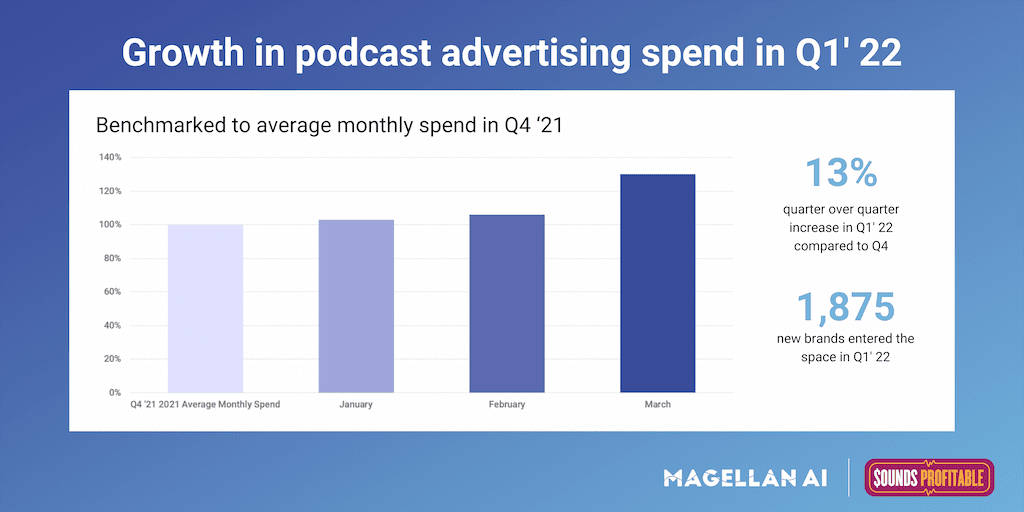
This month Magellan AI is releasing its Q1′ 22 Podcast Advertising Benchmark Report. In anticipation of that release we wanted to share a teaser of what has become a staple in our benchmark report; the quarter over quarter growth in podcast advertising.
This figure shows the growth in average monthly advertiser spend in Q1′ 22, benchmarked to that of Q4′ 21. Quarter over quarter average monthly spend increased by 13% in Q1′ 22, a rate of growth similar to what we saw from Q3′ 21 to Q4′ 21. Also notable we detected a 21% increase from February to March. Contributing to this growth, 1,875 advertisers entered the podcast advertising space for the first time in Q1′ 22, spending on average $19k during the quarter.
Interested in more insights like this? Download the Q4 Podcast Advertising Benchmark Report for the full analysis. And stay tuned this month for the Q1′ 22 Podcast Advertising Benchmark Report.
Anatomy of an Ad with ThoughtLeaders

What makes a good podcast ad? You know it when you hear it, sure. But is there more to it? We’ve teamed up with ThoughtLeaders to break down what works, what doesn’t, and what it takes to make great ads.
This week’s Anatomy of an Ad breaks down a host-read for Daily Harevest presented by Krista Williams and Lindsey Simcik, hosts of the podcast Almost 30.
Find out what worked well and what could be improved upon as you work to make your own ad reads better.

